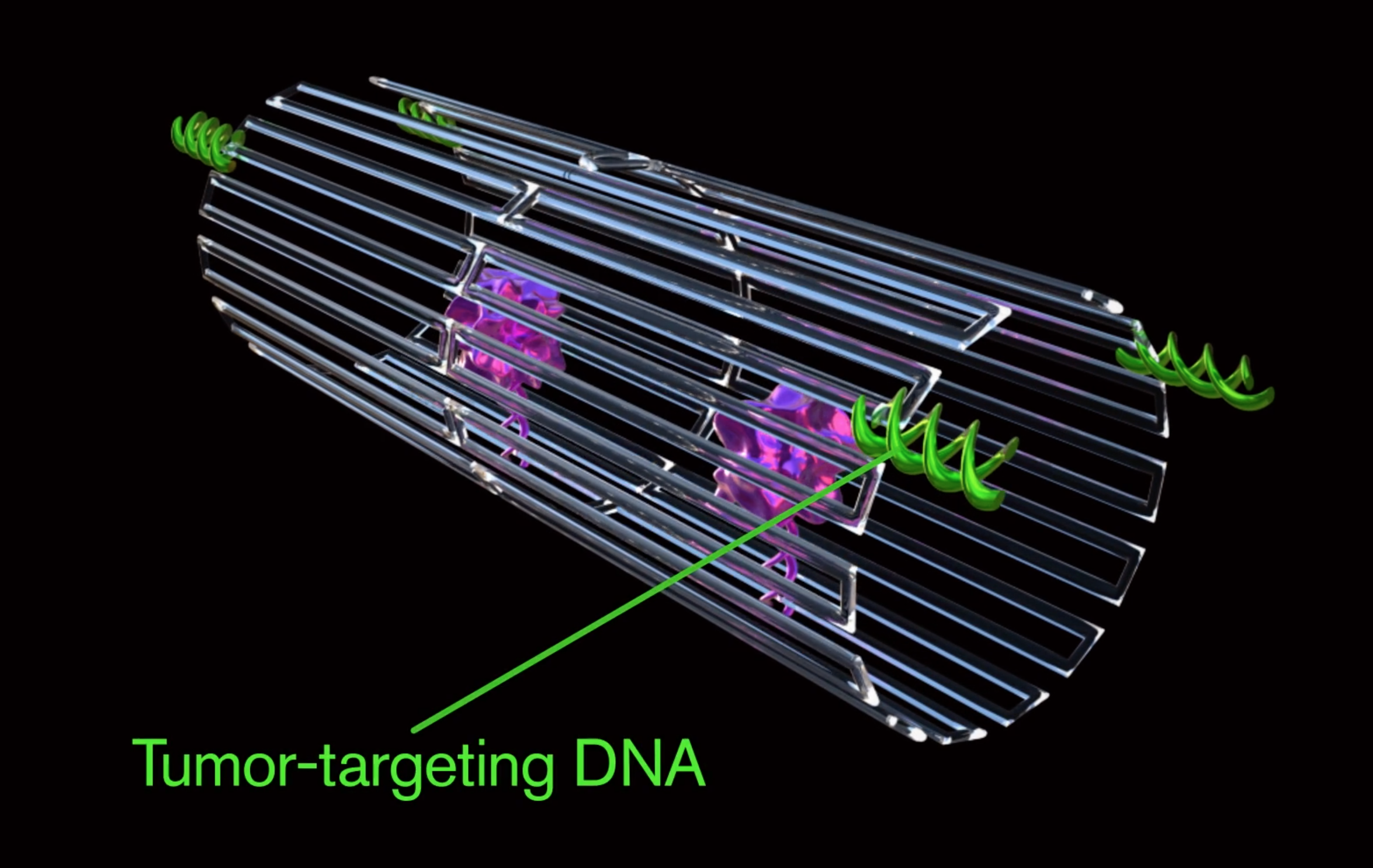
By Brian Santo, contributing writer
Scientists at Arizona State University (ASU), in collaboration with researchers from the National Center for Nanoscience and Technology (NCNST) of the Chinese Academy of Sciences, began with a biological targeting mechanism called an aptamer.
An aptamer is a sequence of DNA or RNA that will bind only to a specific molecular target. Aptamers can attach to proteins, nucleic acids, cells, tissues, and even organisms. The ASU researchers bioengineered an aptamer that would target a protein called nucleolin.
Cells in the interior surface of blood vessels are called endothelial cells (it pays to increase your word power!). Nucleolin is made in high amounts only by endothelial cells in tumors. Nucleolin is not found on the surface of healthy cells. (Remember that; it will be important later.)
The ASU researchers created DNA that includes nucleolin-targeting aptamers and formed the DNA into sheets measuring 60 x 90 nm. To each sheet, they attached an average of four molecules of an enzyme called thrombin. Thrombin is a blood coagulant.
DNA can be folded. Over the last two decades, researchers have learned to how to program DNA to fold and unfold into various shapes under specific conditions, a process that’s come to be known as DNA origami. ASU, entirely not coincidentally, has been at the forefront of DNA origami for some time.
ASU scientists programmed their DNA sheets to curl into tubes surrounding the thrombin and then shot the DNA tubes into mice who had cancerous tumors.
The DNA bots bobbed about in the bloodstreams of the mice until they arrived inside the blood vessels leading through the tumors. They attached themselves to the nucleolin that they found there and, in the process, unfolded, exposing the thrombin, which coagulated the blood inside the tumor, creating blockages that literally asphyxiated the tumors.
If they were killing something other than cancer, it would be diabolical.
Ordinarily, a physician wouldn’t want coagulants circulating freely in patients’ systems because of the danger of causing a blood clot that could lead to a stroke. Because nucleolin is not found in healthy cells, however, this method promises to be safe because there won’t be enough nucleolin in the body to trigger enough DNA bots to release enough coagulant to cause a problem anywhere except inside a tumor.
The trial included eight mice. The treatment generated tumor tissue damage in all of them within 24 hours. The nanobots were cleared and degraded from the body within that same time window. By two days, there was evidence of advanced thrombosis (blood clots), and after three days, thrombi in all tumor vessels were observed. Three of the mice showed complete regression of the tumors. The researchers report that there was no effect on healthy tissues.
“[T]his technology is a strategy that can be used for many types of cancer [being that] all solid tumor-feeding blood vessels are essentially the same,” said Hao Yan, director of the ASU Biodesign Institute’s Center for Molecular Design and Biomimetics and the Milton Glick Professor in the School of Molecular Sciences.
Source: ASU.edu
Advertisement
Learn more about Electronic Products Magazine





